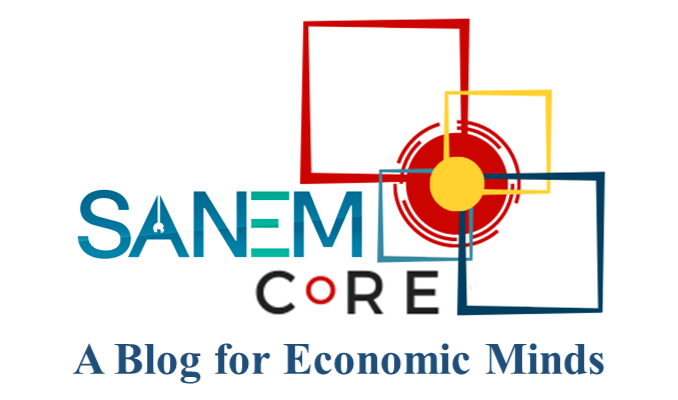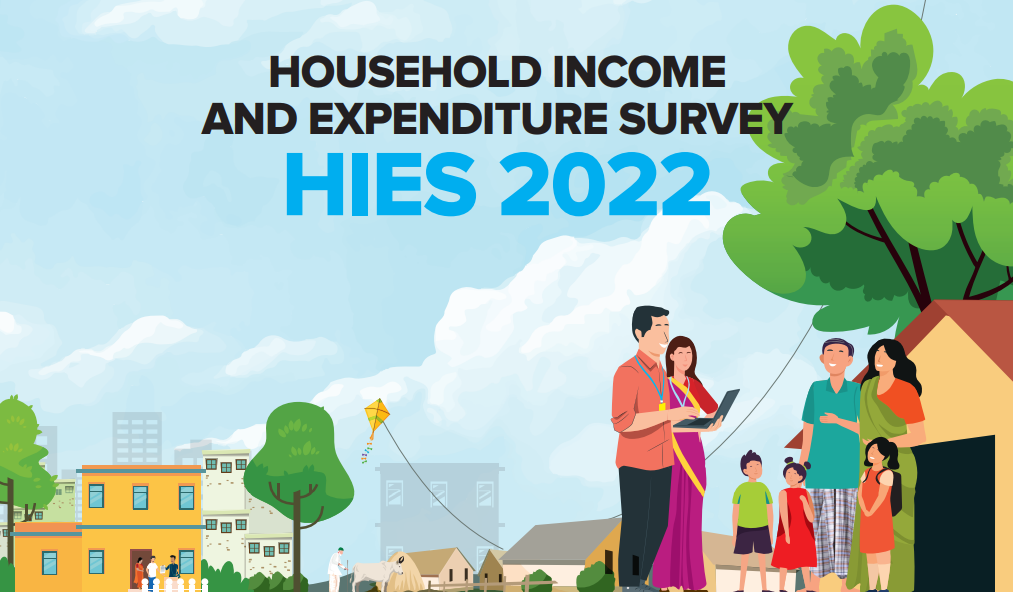The Household Income and Expenditure Survey (HIES) 2022, conducted by the Bangladesh Bureau of Statistics, is a nationally representative survey providing detailed data on income, expenditure, and consumption. This survey is crucial as it forms the basis for official statistics on poverty and monetary welfare, offering significant insights into the country’s socio-economic characteristics. In HIES 2022, 14,400 households from 720 PSUs were surveyed using the Enumeration Area from the Population and Housing Census 2022.
With the updated methodology, HIES 2022 remains a prime instrument for understanding the challenges and opportunities within the country’s economy. According to the survey results, HIES 2022 has found tremendous improvements in the living standards and socio-economic status of households in Bangladesh. The HIES 2022 survey shows that average monthly household incomes significantly improved from TK 15,988 in 2016 to TK 32,422 in 2022. However, these figures would require critical analysis of the broad context and implications for a casual commentary. On the surface, there appears to be an improvement in economic standards. But the reality is much more complex and nuanced, particularly with the high inflation brought on by COVID-19 and the Ukraine-Russia war. These developments have markedly impacted the cost of living, with inflationary pressures threatening to erode the real purchasing power of households even as nominal income levels continue to improve.
Inflation has been exceptionally high for necessities such as food, housing, and utility services, which have a high weight in the consumption basket of low-income families. For instance, although per-capita average consumption increased from TK 15,420 in 2016 to TK 30,603 in 2022, the expenditure on food and beverages stayed at 45.76% of total consumption. This suggests that a great deal of an increase in income goes into basic needs, meaning it is not saved or invested in other ways that could increase long-term security for households. Moreover, shares of expenditures on housing and house rent decreased marginally to 10.25% in 2022 from 12.43% in 2016, which could be suggestive of higher living costs being absorbed by an increased income stream but not necessarily reflecting a better quality of life.
There also seems to be a move towards more discretionary spending as non-food expenditures grew to 54.2% of the total household expenditure in 2022 from 50.31% in 2016. That trend, however, may be one where needs are being met rather than that which raises living standards. For instance, the expenditure on transport in the year 2022 increased to 5.3%, up from 4.6% in the rural area, an indication of an increment in the cost of transportation, an increase that might relate to fuel costs. Equally, education expenses rose to 1.8% across the nation, an indication of a possible rise in the level of educational cost or more focus being placed on educational investments despite economic pressures. The fact that this expenditure is proposed to rise to 4.8% in the rural segment in 2022 from the previous 4.7% reinforces the argument that households are spending more on the services sector, which might not have been recorded earlier or have had increased costs. Included under this category are those for healthcare, which have probably experienced an increase in spending due to the impact of the pandemic, raising the financial burden families are subject to in maintaining health and well-being.
Further, a higher level of income inequality noted throughout the period reconfirms that all benefits of overall economic growth did not percolate down at the same rate to all the households. The Gini national coefficient measuring income inequality was seen to rise from 0.482 in 2016 to 0.499 in 2022. It indicates a widening gap as the benefits of economic growth accrue more and more to higher-income groups. As such, the top 10% of households now appropriate 40.92% of total income as against 38.09% in 2016, the bottom 5% registering a marginal increase in their share of income from 0.23% to 0.37%. Such a drastic contrast stems from an economy in which wealth creation is not proportionally distributed among people and where a significant population enjoys little. It stood further pronounced in urban areas, where it was at 0.539 for the Gini in 2022, compared to 0.498 in 2016. The top 10% of urban households had 45.23% of the total income, while their rural counterparts had 34.95%. This further accentuates the unequal economic gains in that while urban areas benefit most from economic growth, rural households are left to struggle hard to support themselves. In addition, the bottom decile of the urban regions increased only slightly to 1.45% in 2022 from 1.17% in 2016, which shows that the alleviation of urban poverty is slight, and the situation remains serious.
Moreover, the average per capita daily protein intake is 72.56 grams in 2022 compared to 63.8 grams in 2016, thus showing enhanced nutritional standards over the period but not uniformly distributed. Rural households show less protein intake at 71.9 grams compared to urban households at 74.02 grams, which perpetuates a series of disparities in access to nutritious food. A part of this more comprehensive unequal access to resources – an absolutely critical factor in the perpetuation of poverty and inequality – is a result of this nutritional disparity.
To conclude, while the average income and consumption figures revealed from HIES 2022 data are substantially better, these improvements must be considered in a broader context. As a result of rapidly rising inflation rates and increased living costs, many of these improvements have likely been countered for poorer households. In addition, the rise in income inequality indicates that economic fruits have not been evenly distributed and that high-income and urban households have managed to gather the maximum benefits. Even as it represents an improvement, it also requires policies that specifically address inflation, lessen the income disparities, and ensure that economic growth translates to real, sustainable improvement in the living standards of all households within Bangladesh. Data calls for an all-around approach in monetary policy that emphasizes equitable growth so that the gains from economic development are broadly shared. This includes investment in rural development, increased social safety nets, and, most importantly, uprooting the causes of income inequality. Only through these measures will the full potential of economic growth be realized for the whole population of Bangladesh.
This article was first published in the Thinking Aloud on 1 July 2024



RECENT COMMENTS